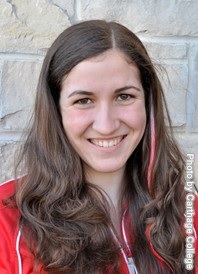Celebration of Scholars
An Investigation of beta-Blocker Association with Chiral Molecular Micelles by means of Molecular Dynamics Simulations
 Name:
Ashley Gladis
Name:
Ashley Gladis
Major: Chemistry
Hometown: Batavia. IL
Faculty Sponsor: Kevin Morris
Other Sponsors:
Type of research: SURE
Funding: SURE, NIH Grant to the RCMI Program at Howard University
Abstract
This project used molecular dynamics (MD) simulations to investigate the intermolecular interactions between two b-blocker drugs and a chiral molecular micelle. The molecular micelle contained twenty covalently bound surfactant monomers. Each monomer was composed of a hydrophobic hydrocarbon chain and a dipeptide headgroup. The chiral molecular micelles studied are used as stationary phases in chiral separations. The b-blocker drugs investigated were atenolol and propranolol. For both b-blockers, (R) or (S) enantiomers were docked into one of five molecular micelle binding pockets. Fifteen nanosecond MD simulations were then carried out. This poster will present analyses of the b-blocker:micelle binding energies, the b-blocker solvent accessible surface areas, and intermolecular hydrogen bonds formed between the b-blockers and the micelles. Structures of the molecular micelle:b-blocker intermolecular complexes will also be shown.Submit date: March 14, 2014, 1:18 p.m.
